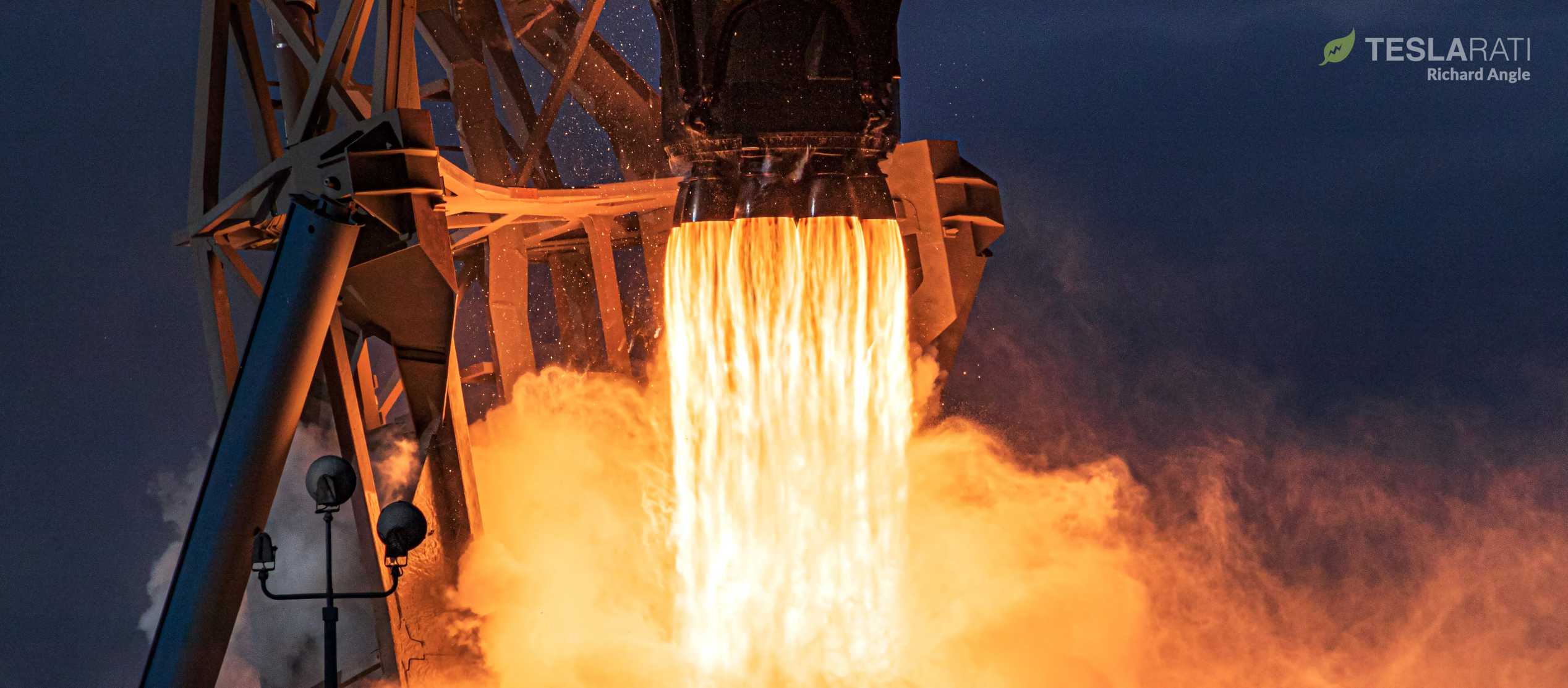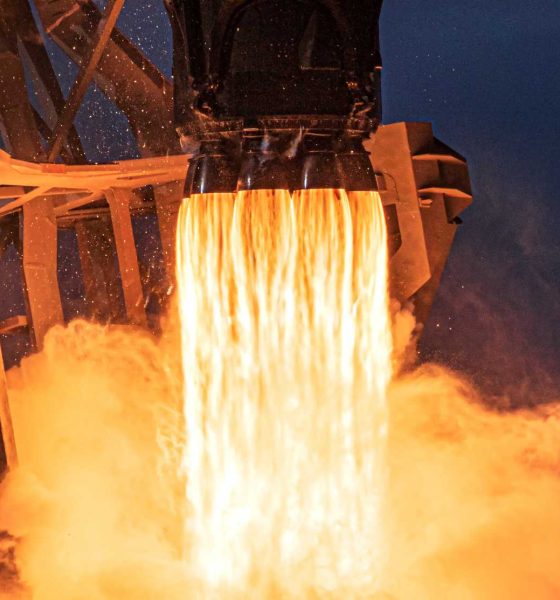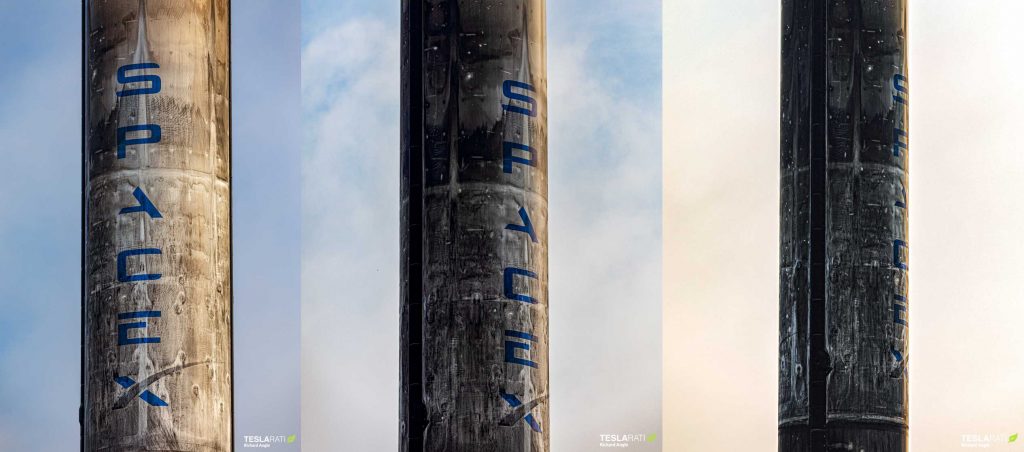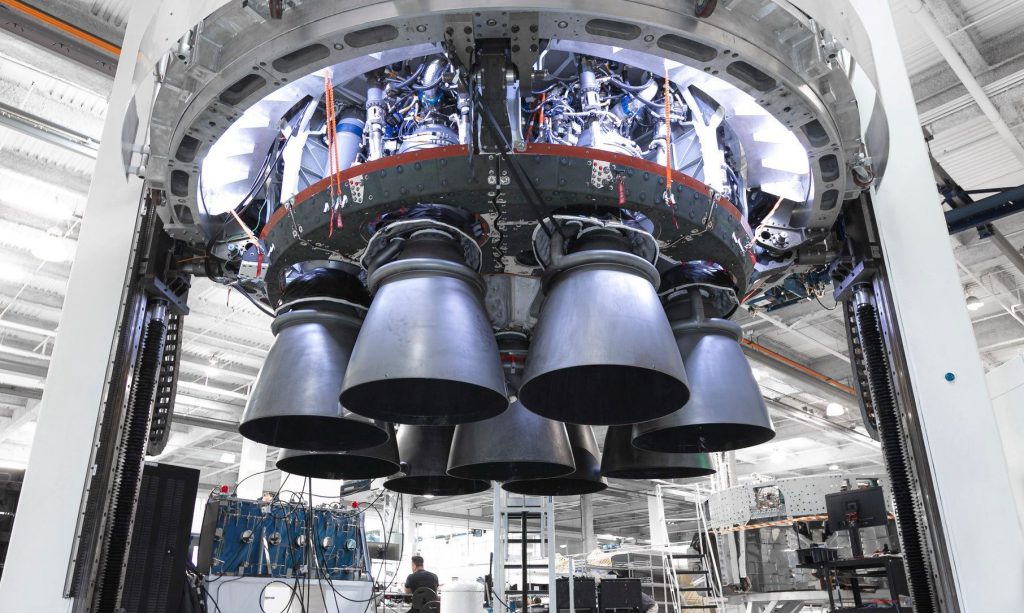

News
SpaceX shuffles rocket launch order after Starlink delay
SpaceX has stood down from a June 26th Starlink launch attempt to allow “additional time for pre-launch checkouts,” meaning that the company’s second US military GPS satellite mission is now up next.
Scheduled to launch no earlier than (NET) 3:56 pm EDT (19:56 UTC) on June 30th, the GPS III SV03 mission will be SpaceX’s last this month, cutting short the possibility that June 2020 would be the company’s first four-launch month. However, as one door closes, another has opened, leaving four more SpaceX launches now scheduled in July.
Additionally, SpaceX’s willingness to delay an internal Starlink launch by a substantial amount serves as a confirmation that the company continues to prioritize reliability and established procedures over expedience. Given that any Falcon 9 failure would severely impact all SpaceX launches, including internal Starlink missions and commercial launches for customers, that should come as no surprise. Still, SpaceX’s Starlink missions pose a perfect storm of low cost and high launch frequency requirements that could incentivize corner-cutting in the short term.

At the same time, it’s not actually clear whether Starlink V1 L9’s delay was SpaceX’s decision or something decided (or heavily influenced) by the US military. Shortly after SpaceX announced the delay, new regulatory filings suggested that June 28th was the new target, but they were quickly rescinded. It’s possible that the US military asserted its desire to be SpaceX’s immediate priority ahead of the launch of an extremely expensive GPS III satellite.

While entirely speculative, it’s not implausible. If the US military did, in fact, intervene to request that the GPS III SV03 and Starlink-9 launch order be swapped, it might technically benefit from having SpaceX’s more or less full attention, but it would also lose out on the invaluable data provided by another launch.
Regardless, GPS III SV03 is now SpaceX’s next launch. Critically, the mission will be the company’s first operational launch and landing for the US Air/Space Force after the military branch gave SpaceX permission to attempt to land booster B1060. The GPS III launch will be SpaceX’s second, following the successful (but expendable) launch of GPS III SV01 and Falcon 9 booster B1054 in December 2018. This time around, the brand new Falcon 9 Block 5 booster’s life won’t necessarily be cut short after a single launch, so long as the rocket is able to safely land on drone ship Just Read The Instructions (JRTI).
Starlink-9’s delay means that SpaceX will be able to launch three missions at most in June 2020, cutting short the possibility that the month would be the first to host four Falcon 9 launches. However, July now technically has four SpaceX launches scheduled: Starlink-9 (early July), ANASIS-II (mid-July), SAOCOM 1B (late July), and Starlink-10 (late July). Once again, with two launches scheduled near the end of the month, the odds that one or more missions will slip into August are substantially higher, but the possibility remains.
Stay tuned for updates as SpaceX gets ready for its next 2-5 rocket launches.
Check out Teslarati’s Marketplace! We offer Tesla accessories, including for the Tesla Cybertruck and Tesla Model 3.

News
Tesla China quietly posts Robotaxi-related job listing
Tesla China is currently seeking a Low Voltage Electrical Engineer to work on circuit board design for the company’s autonomous vehicles.

Tesla has posted a new job listing in Shanghai explicitly tied to its Robotaxi program, fueling speculation that the company is preparing to launch its dedicated autonomous ride-hailing service in China.
As noted in the listing, Tesla China is currently seeking a Low Voltage Electrical Engineer to work on circuit board design for the company’s autonomous vehicles.
Robotaxi-specific role
The listing, which was shared on social media platform X by industry watcher @tslaming, suggested that Tesla China is looking to fill the role urgently. The job listing itself specifically mentions that the person hired for the role will be working on the Low Voltage Hardware team, which would design the circuit boards that would serve as the nervous system of the Robotaxi.
Key tasks for the role, as indicated in the job listing, include collaboration with PCB layout, firmware, mechanical, program management, and validation teams, among other responsibilities. The role is based in Shanghai.
China Robotaxi launch
China represents a massive potential market for robotaxis, with its dense urban centers and supportive policies in select cities. Tesla has limited permission to roll out FSD in the country, though despite this, its vehicles have been hailed as among the best in the market when it comes to autonomous features. So far, at least, it appears that China supports Tesla’s FSD and Robotaxi rollout.
This was hinted at in November, when Tesla brought the Cybercab to the 8th China International Import Expo (CIIE) in Shanghai, marking the first time that the autonomous two-seater was brought to the Asia-Pacific region. The vehicle, despite not having a release date in China, received a significant amount of interest among the event’s attendees.
Elon Musk
Elon Musk and Tesla AI Director share insights after empty driver seat Robotaxi rides
The executives’ unoccupied tests hint at the rapid progress of Tesla’s unsupervised Robotaxi efforts.

Tesla CEO Elon Musk and AI Director Ashok Elluswamy celebrated Christmas Eve by sharing personal experiences with Robotaxi vehicles that had no safety monitor or occupant in the driver’s seat. Musk described the system’s “perfect driving” around Austin, while Elluswamy posted video from the back seat, calling it “an amazing experience.”
The executives’ unoccupied tests hint at the rapid progress of Tesla’s unsupervised Robotaxi efforts.
Elon and Ashok’s firsthand Robotaxi insights
Prior to Musk and the Tesla AI Director’s posts, sightings of unmanned Teslas navigating public roads were widely shared on social media. One such vehicle was spotted in Austin, Texas, which Elon Musk acknowleged by stating that “Testing is underway with no occupants in the car.”
Based on his Christmas Eve post, Musk seemed to have tested an unmanned Tesla himself. “A Tesla with no safety monitor in the car and me sitting in the passenger seat took me all around Austin on Sunday with perfect driving,” Musk wrote in his post.
Elluswamy responded with a 2-minute video showing himself in the rear of an unmanned Tesla. The video featured the vehicle’s empty front seats, as well as its smooth handling through real-world traffic. He captioned his video with the words, “It’s an amazing experience!”
Towards Unsupervised operations
During an xAI Hackathon earlier this month, Elon Musk mentioned that Tesla owed be removing Safety Monitors from its Robotaxis in Austin in just three weeks. “Unsupervised is pretty much solved at this point. So there will be Tesla Robotaxis operating in Austin with no one in them. Not even anyone in the passenger seat in about three weeks,” he said. Musk echoed similar estimates at the 2025 Annual Shareholder Meeting and the Q3 2025 earnings call.
Considering the insights that were posted Musk and Elluswamy, it does appear that Tesla is working hard towards operating its Robotaxis with no safety monitors. This is quite impressive considering that the service was launched just earlier this year.
Elon Musk
Starlink passes 9 million active customers just weeks after hitting 8 million
The milestone highlights the accelerating growth of Starlink, which has now been adding over 20,000 new users per day.

SpaceX’s Starlink satellite internet service has continued its rapid global expansion, surpassing 9 million active customers just weeks after crossing the 8 million mark.
The milestone highlights the accelerating growth of Starlink, which has now been adding over 20,000 new users per day.
9 million customers
In a post on X, SpaceX stated that Starlink now serves over 9 million active users across 155 countries, territories, and markets. The company reached 8 million customers in early November, meaning it added roughly 1 million subscribers in under seven weeks, or about 21,275 new users on average per day.
“Starlink is connecting more than 9M active customers with high-speed internet across 155 countries, territories, and many other markets,” Starlink wrote in a post on its official X account. SpaceX President Gwynne Shotwell also celebrated the milestone on X. “A huge thank you to all of our customers and congrats to the Starlink team for such an incredible product,” she wrote.
That growth rate reflects both rising demand for broadband in underserved regions and Starlink’s expanding satellite constellation, which now includes more than 9,000 low-Earth-orbit satellites designed to deliver high-speed, low-latency internet worldwide.
Starlink’s momentum
Starlink’s momentum has been building up. SpaceX reported 4.6 million Starlink customers in December 2024, followed by 7 million by August 2025, and 8 million customers in November. Independent data also suggests Starlink usage is rising sharply, with Cloudflare reporting that global web traffic from Starlink users more than doubled in 2025, as noted in an Insider report.
Starlink’s momentum is increasingly tied to SpaceX’s broader financial outlook. Elon Musk has said the satellite network is “by far” the company’s largest revenue driver, and reports suggest SpaceX may be positioning itself for an initial public offering as soon as next year, with valuations estimated as high as $1.5 trillion. Musk has also suggested in the past that Starlink could have its own IPO in the future.








